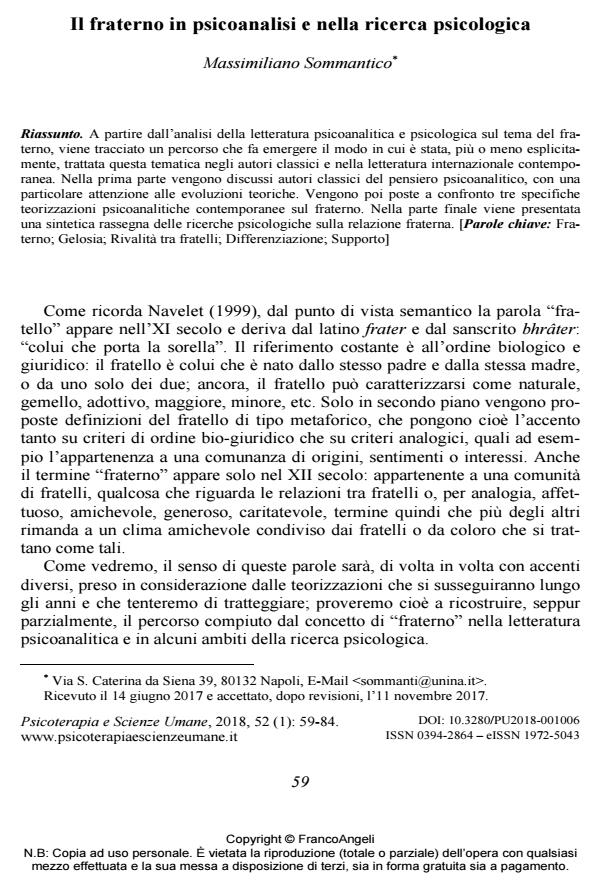Il fraterno in psicoanalisi e nella ricerca psicologica
Titolo Rivista PSICOTERAPIA E SCIENZE UMANE
Autori/Curatori Massimiliano Sommantico
Anno di pubblicazione 2018 Fascicolo 2018/1
Lingua Italiano Numero pagine 26 P. 59-84 Dimensione file 143 KB
DOI 10.3280/PU2018-001006
Il DOI è il codice a barre della proprietà intellettuale: per saperne di più
clicca qui
Qui sotto puoi vedere in anteprima la prima pagina di questo articolo.
Se questo articolo ti interessa, lo puoi acquistare (e scaricare in formato pdf) seguendo le facili indicazioni per acquistare il download credit. Acquista Download Credits per scaricare questo Articolo in formato PDF

FrancoAngeli è membro della Publishers International Linking Association, Inc (PILA)associazione indipendente e non profit per facilitare (attraverso i servizi tecnologici implementati da CrossRef.org) l’accesso degli studiosi ai contenuti digitali nelle pubblicazioni professionali e scientifiche
A partire dall’analisi della letteratura psicoanalitica e psicologica sul tema del fraterno, viene tracciato un percorso che fa emergere il modo in cui è stata, più o meno esplicitamente, trattata questa tematica negli autori classici e nella letteratura internazionale contemporanea. Nella prima parte vengono discussi autori classici del pensiero psicoanalitico, con una particolare attenzione alle evoluzioni teoriche. Vengono poi poste a confronto tre specifiche teorizzazioni psicoanalitiche contemporanee sul fraterno. Nella parte finale viene presentata una sintetica rassegna delle ricerche psicologiche sulla relazione fraterna.
Parole chiave:Fraterno; Gelosia; Rivalità tra fratelli; Differenziazione; Supporto
- Adult siblings of people with and without intellectual and developmental disabilities: Sibling relationship attitudes and psychosocial outcomes M. Sommantico, S. Parrello, B. De Rosa, in Research in Developmental Disabilities 103594/2020 pp.103594
DOI: 10.1016/j.ridd.2020.103594 - Entre deux lignées : le couple mis à l’épreuve ? Massimiliano Sommantico, in Le Divan familial /2018 pp.139
DOI: 10.3917/difa.041.0139 - The Fraternal: From the Intrapsychic to the Intersubjective Massimiliano Sommantico, in Romanian Journal of Psychoanalysis /2021 pp.43
DOI: 10.2478/rjp-2021-0004
Massimiliano Sommantico, Il fraterno in psicoanalisi e nella ricerca psicologica in "PSICOTERAPIA E SCIENZE UMANE" 1/2018, pp 59-84, DOI: 10.3280/PU2018-001006